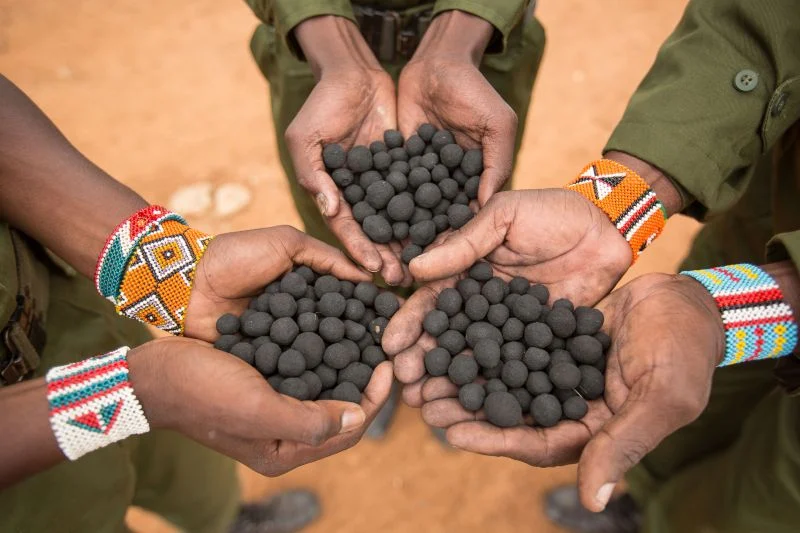Seedball technology reviving Kenyan forests and farms
Tiny black balls of seed and dust are bringing new life to Kenya’s forests and farms. Seedball technology offers a cheap, low-maintenance way to restore degraded land, enrich soils, and boost climate resilience as the country pushes toward 30 per cent forest cover by 2030.
By Sandra Neddy
At first glance, they look like nothing more than tiny, dusty black marbles. But these are not toys — they are seedballs, small packages of hope for Kenya’s forests, degraded lands, and drylands.
Unveiled during the launch of the Kantaria Agricultural Technology and Innovation Centre (KATIC) at the University of Nairobi’s Upper Kabete campus, the innovation drew the attention of dignitaries and farmers alike.
Many were eager to learn how such small balls of dust and seed could restore forests, rejuvenate soils, and support sustainable farming.
How seedballs work
Seedball technology reintroduces native tree and grass species into degraded areas, with each seed encased in a biochar coating that doubles as a natural fertiliser.
Indigenous seeds sourced from the Kenya Forestry Research Institute (KEFRI) are coated with charcoal dust mixed with natural binders, often made from dead acacia trees. Once dried, the marble-sized balls are scattered directly onto the ground, where they remain dormant until conditions like rainfall and warmth trigger germination.
Unlike conventional tree-planting methods, which require nurseries, land preparation, transplanting, and aftercare, seedballs need no maintenance. The biochar coating protects seeds from birds, insects, and harsh weather, ensuring more survive to sprout.
Fighting deforestation and degradation
Kenya’s Forest Status Report 2024 paints a worrying picture, which shows that the country loses about 84,716 hectares of forest annually to deforestation, with a further 14,934 hectares degraded. By removing the cost and complexity of tree farming, seedballs offer a fast, low-cost way to restore tree cover.
According to Seedballs Kenya CEO, Teddy Kinyanjui, the process begins with creating biochar in a kiln, which is then mixed with natural binders to form the coating. Indigenous seeds are encased in this mixture to form the seedballs, which are dried and packaged for distribution.
“We are trying to incorporate people having a holistic view of using biomass sustainably. Anything from maize cobs, twigs, branches, to coconut husks can be transformed into biochar,” Kinyanjui said emphasising the broader vision.
Beyond Trees
The benefits extend beyond forestry. Farmers are finding biochar valuable as a soil enhancer. “When used as fertiliser, it enriches soils and boosts crop yields,” said Alvin Juma, a student at AHITI Kabete.
At KATIC, researchers are already experimenting with African nightshade (managu) grown in biochar-enriched soil, with promising results.
As Kenya strives to raise its forest cover to 30 per cent by 2030, innovations like seedballs offer a scalable, sustainable solution. By restoring degraded lands, enriching soils, and supporting biodiversity, seedball technology contributes to environmental sustainability, climate resilience, and rural socio-economic development.



